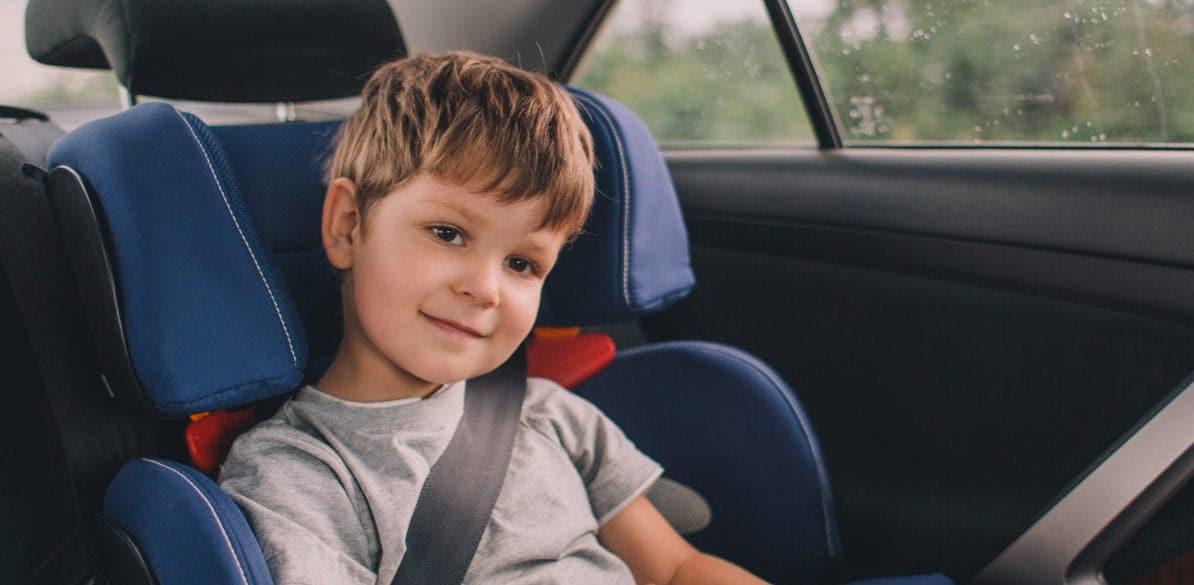Why don’t Group II and Group III child seats have a harness if this is safer?

From the moment young children are born, they have to travel in child restraint systems with 5-point harnesses until it is time to switch to Group II and III seats, or until they reach 100 cm to 150 cm if the child seat is approved under new Regulation 129. What is the reason for this change?Is a harness really safer than a conventional seat belt?
Child seats in Group I can be used up to a weight of 15 or 18 kilos, or 105 cm in height.From then on, the child should start using a child restraint system in Group II (15-25 kg) and then Group III (22-36 kg).
Child seats in Group O+ and Group I generally secure the child with a three- or five-point harness, while seats in Group II and Group III secure the child with the vehicle’s seat belt. As a general rule, from the time the child reaches around 15 kilos they are secured in a different way.
The truth is that the most efficient systems are the ones with a five-point harness. Indeed, this is the system chosen for competition vehicles. The reason is that they restrain the body much more in every direction in the event of a collision: they prevent the body from moving upwards and sideways, and in the case of children they stop them sliding downwards. In fact, they prevent the well-known submarining effect and distribute the load of the impact between the shoulders, hips and pelvis. Consequently they are particularly efficient in preventing abdominal injuries.
On the other hand, the three-point belt is also a safe option, but to a lesser extent than the five-point one. So why don’t the other child seats have this type of harness? The explanation lies in the fact that as the child weighs more, the harness needs to expend a greater effort in restraining them and hence the seatback supporting the child needs to be more resistant.
It is considered that from the time a child reaches a weight of 15 kilos, its body is strong enough to withstand the force of a seat belt. However, given that seat belts in cars today are designed for adults, smaller children need assistance for them to fit correctly: child seats in Groups II and III. In contrast, the harness of child seats in Group I is no longer present even though this is the best option.
This does not mean that securing a child in a child seat with the vehicle’s seat belt is unsafe. The best option is always for the child to be seated in a child restraint system suitable for their height and weight. While it is a good idea to delay the move to a Group II seat as long as possible (provided that the child does not exceed the maximum weight and height established by the manufacturer), it is also dangerous to put a child in a seat that is not the most appropriate one and is too small, as they would not be properly protected in the event of an impact.
If you put a child in a child seat that is too big, for example in a Group II seat before they have reached 15 kilos, you will find that the child’s body is not ready to withstand the force exerted on it by a seat belt in the event of an accident. Furthermore, the child would not be secured properly as due to the child’s height the belt would almost certainly not be positioned correctly and may even cause injuries. Apart from this, you should also bear in mind the increased safety that a harness offers. The same situation applies in the opposite direction, i.e. if the child weighs more than 18 kilos and is still traveling in a Group I seat. In this case, the harness would not be strong enough to support the child’s weight.
With both harness and belt, correctly fastened
In this respect, you should bear in mind that for both harnesses and seat belts to be completely secure they must be properly buckled. Remember that a tight harness is a safe harness.
Regarding the seat belt, the child must be restrained and the seat installed following the manufacturer’s instructions.
Remember that you need to pass the seat belt across the points or guides shown by the manufacturer (they are usually highlighted in color) and ensure that the seat belt is properly affixed. The upper strap should not lie too close to the neck and the lower strap should rest over the pelvic bones, not the stomach. This helps to avoid potential injuries, especially abdominal ones.
At all times you should avoid strapping in the child when they are wearing a coat as this gives a false sense of security.
A fourth anchor point on the belt
Given the importance of the harness and the need to offer the greatest possible safety, we have been talking recently about the Secureguard, a fourth anchoring point.
Thus, Group II and Group III child restraint systems are supplied with a crotch harness that acts as a fourth anchor point for the seat belt. This prevents the abdominal section from moving out of place on the journey, keeping it secured in the right position. It helps to reduce the force exerted on the abdomen in the event of a collision.
As with five-point harnesses, this central piece eliminates the submarining effect and avoids the belt slipping up over the belly, keeping it in the lower abdomen area.
